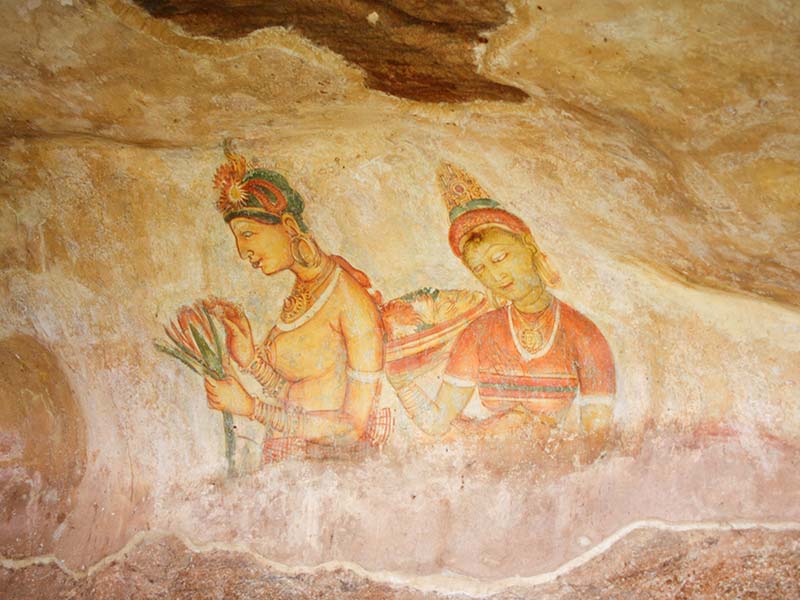Sigiriya Rock Fortress or the Lion Rock is Sri Lanka’s single most visited tourist attraction and with good reason. The history of this rock fortress lies in family feuds and patricide. This lone sentinel of reddish gneiss rising 600 feet from the rolling central plains, is a magnificent rock fortress and palace. A World Heritage site, King Kasyapa built the rock citadel in the 5th Century. The grounds that surround the Sigiriya Rock Fortress, demonstrate astounding feats of hydro-engineering and a level of urban planning difficult to imagine for the period.
The Story Behind Sigiriya Rock Fortress
Historical records indicate a gruesome tale behind the establishment of the Sigiriya Rock Fortress. Kasyapa was the son of King Dhatusena by a non-royal consort. The naming of Mogallana, Kasyapa’s half-brother by the Queen, incensed him. Therefore, in a bid to attempt King Dhatusena to change his mind and make him the heir, Kasyapa engineered a coup and imprisoned his father. Over time realizing that the King will not change his mind, he had his father walled up in a chamber and left him to die. Mogallana, fearing that it would be his life next went into self-imposed exile in India. Kasyapa knew reprisal would come from the rightful heir and shifted the capital from Anuradhapura to Sigiriya, using the imposing rock to help build his fortress.
Landscaped Palace Gardens
The gardens that extend from the base of the rock are one of the oldest examples of landscaping in the world. They consist of three parts – water gardens, boulder gardens, and terraced gardens. The water gardens are laid out in three sections and are connected to the outer moat. The water is fed by a man-made lake by way of a complex system of channels, gateways, and underground conduits. Some of its limestone fountains work to this day, especially during the rainy season. Next, the boulder gardens feature a series of paths linking a cluster of large boulders which lead up to the base of the rock. Finally, the terrace gardens are located at the base of the rock. They are formed by a series of brick walls, which are at different heights and built around the perimeter of the rock.
Lower Palace
Beyond the terraced gardens, protected by the moat, lies the remains of the lower palace. This palace was used when the upper palace was inhabitable due to inclement weather. A stairway in stone leads towards the summit passing the mirror wall. The mirror wall is made of brickwork and highly polished plaster. Furthermore, it is said that the surface was once so shiny that King Kashyapa could see his own reflection on it. Over the centuries, travelers have used the mirror wall to pen their thoughts and these inscriptions are still discernible. Along the passage, 21 frescoes of a bare-breasted maiden in a unique style adorn the rock walls. This is all that remains of what was once believed to have covered most of the face of the rock.
Upper Palace
Further up the rock, at a mid-level terrace, lies the entrance to the upper palace. Carved into the rock, the lion’s face located at the entrance would have presented an imposing fortification. Although what remains today are just the forepaws of the granite beast. What was the mouth, forms a narrow entrance to the summit and palace grounds. At the top of the rock lie the ruins of the upper palace, which was a gleaming white structure.
Written by Jonathan Roelofsz for Travel Lanka Compass



0 Comment